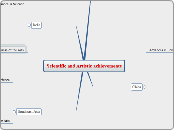Scientific and Artistic achievements
Southeast Asia
Ikat
Batik
Pottery
eg. hikayat, syair, pantun
written in Jawi from 15th century onwards
Architecture
Angkor Wat
to show their devotion to their new gods
Hydraulic engineering
use damns or dykes to control water supply
2000 BCE
Sculpture
tomb of Emperor Qin Shihuang
Silk
2600 BCE
Painting
Tang, Song dynasty
Du Fu
Li Bai
Sima Qian wrote Shiji
Pottery and Porcelain
Printing
Printer invented by Bi Sheng (Song dynasty)
Paper
Gunpowder
Tang dynasty
Mechanical clock
Song dynasty
Compass
invented by Chinese or Indians
Han dynasty
Seismograph
device for detecting earthquakes
132 CE
Zhang Heng
Han dynasty
Shang and Han dynasties
Acupuncture
the insertion of tips of needles into specific parts of the body to relieve pain and help healing
Richness of the Arts
Textiles
cotton
Literature
Sanskrit poem
Ramayana
Mahabharata
Poem
Vedas
Painting, sculpture and architecture
Ajanta caves
Advances in Science
Medicine
started in 600 BCE
Metallurgy
eg. iron pillar of Delhi
the study of metals
Mathematics and astronomy
Astronomy
the scientific study of the stars and planets
great mathematician: Aryabhata
pi, zero and decimal system developed
Golden Age
Khmere dynasty
China
Han, Song and Tang dynasty
India
Gupta dynasty
a period of peace, stability and prosperity that enables science and the arts to flourish
little poverty or starvation, sastified with their government









